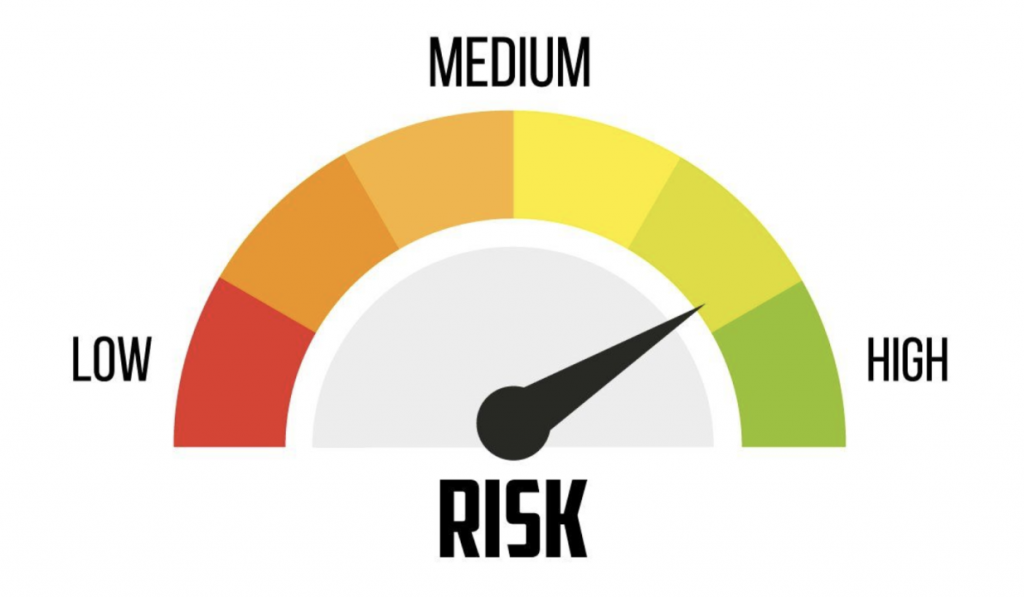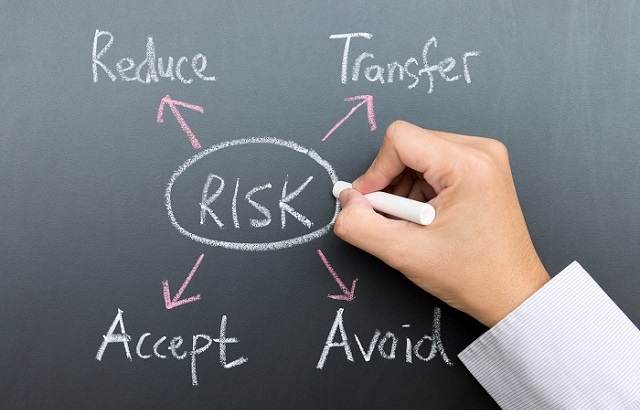One of the most important but often overlooked aspects of investing is understanding your own risk tolerance. While financial advisors can suggest the “best” investments based on returns and market trends, only you can truly determine how much risk you’re comfortable taking.
What Is Risk Tolerance?
Risk tolerance is your ability and willingness to endure fluctuations in the value of your investments. It determines how you respond emotionally and financially to market volatility, potential losses, and long-term uncertainty. In short, it’s your personal comfort zone when it comes to investing.
Types of Risk Tolerance
- Conservative Conservative investors prioritize the safety of their principal. They prefer stable, low-risk investments such as government bonds, savings accounts, or money market funds. Even moderate fluctuations can make them uneasy.
- Moderate Moderate investors are comfortable with a balanced mix of stocks and bonds. They accept some volatility in exchange for better long-term returns but avoid taking extreme risks.
- Aggressive Aggressive investors focus on growth and are willing to accept significant short-term fluctuations. They often invest heavily in equities, emerging markets, and other high-risk/high-reward assets.
Why Knowing Your Risk Tolerance Matters
- Reduces Emotional Investing: When you understand your risk comfort level, you’re less likely to panic sell during a downturn or chase overly risky trends during a boom.
- Improves Portfolio Alignment: Matching your investments to your risk profile ensures your strategy supports your goals without causing stress or regret.
- Encourages Long-Term Thinking: Investors who know their risk limits tend to stay invested longer, which is key to building wealth.
Factors That Influence Risk Tolerance

- Age Younger investors usually have a longer time horizon and can afford to take more risks, as they have time to recover from losses. Older investors may prefer more conservative allocations to preserve capital.
- Investment Goals Are you investing for retirement in 30 years or buying a home in 3 years? The longer your time horizon, the more risk you can typically tolerate.
- Financial Situation If you have a stable income, emergency savings, and low debt, you may be more comfortable taking investment risks. On the other hand, financial instability often leads to lower risk tolerance.
- Personality and Emotional Resilience Some people simply handle stress better than others. If seeing your portfolio drop 20% makes you lose sleep, you may want a more conservative allocation.
- Investment Knowledge The more you understand how markets work, the more confident you may feel during volatile periods.
How to Assess Your Risk Tolerance
- Self-Assessment Quizzes Many financial institutions and robo-advisors offer risk tolerance questionnaires that ask about your goals, investment horizon, and how you’d react to various market scenarios.
- Behavioral Review Reflect on your past financial decisions. Did you sell during a market crash? Did you hold through volatility? Your actual behavior may reveal more than hypothetical scenarios.
- Professional Guidance A certified financial planner can help you assess your tolerance and design a portfolio that aligns with your comfort level.
Building a Portfolio That Matches Your Risk Tolerance
Once you’ve assessed your risk level, you can build a suitable investment mix:
- Conservative Portfolio: 70% bonds, 20% large-cap stocks, 10% cash or alternatives
- Moderate Portfolio: 60% stocks (including international), 35% bonds, 5% cash
- Aggressive Portfolio: 90% stocks (including small-cap and international), 10% bonds or alternatives
Over time, rebalance your portfolio to maintain your desired allocation.
Risk Capacity vs. Risk Tolerance
It’s important to distinguish between:
- Risk capacity: The objective ability to take risks based on financial resources and time horizon.
- Risk tolerance: The subjective willingness to take those risks.
For example, a 30-year-old may have high risk capacity but low tolerance if they’re emotionally uncomfortable with volatility. In that case, it’s better to invest more conservatively until confidence improves.
Tips to Stay Within Your Comfort Zone

- Avoid Overexposure: Don’t invest more than you can afford to lose in risky assets.
- Diversify: Spread investments across asset classes to reduce overall volatility.
- Use Target-Date Funds: These adjust asset allocation over time based on your retirement year.
- Automate Contributions: Consistent investing removes emotion from the equation.
- Stay Educated: Knowledge builds confidence, which can raise your tolerance over time.
Adapting Over Time
Your risk tolerance isn’t fixed. Life events such as a job change, marriage, having children, or approaching retirement can shift your comfort level. Reassess your profile every few years or after major changes.
Understanding Your Risk Tolerance: The Key to Confident Investing
One of the most important and often overlooked aspects of successful investing is knowing your own risk tolerance. Market returns, economic data, and expert opinions are important, but none of them matter as much as your ability to stick with your investments through good times and bad.
You can have the most mathematically “perfect” portfolio on paper, but if it keeps you awake at night or causes you to panic during market dips, it’s not the right portfolio for you.
What Is Risk Tolerance?
Risk tolerance is your ability and willingness to endure fluctuations in your investment value. It’s both:
- Financial capacity – how much loss you could sustain without jeopardizing your goals.
- Emotional capacity – how much loss you can handle without making impulsive, harmful decisions.
In simple terms: It’s your personal comfort zone for risk.
The Three Main Types of Risk Tolerance
- Conservative
- Prioritizes safety of principal.
- Prefers low-volatility assets such as:
- Government bonds.
- Certificates of deposit (CDs).
- High-yield savings accounts.
- Even moderate market drops can feel uncomfortable.
- Example: Someone nearing retirement who can’t afford to lose any capital.
- Moderate
- Comfortable with a balanced portfolio of stocks and bonds.
- Accepts some volatility in exchange for better long-term growth.
- Avoids extreme market speculation.
- Example: A mid-career professional saving for retirement in 20 years.
- Aggressive
- Focuses heavily on growth and can accept large short-term swings.
- Invests heavily in:
- Equities (including small-cap and international).
- Emerging markets.
- Higher-risk alternative assets.
- Example: A 25-year-old investor with a steady job and no debt, aiming for maximum growth.
Why Knowing Your Risk Tolerance Matters
- Reduces Emotional Investing – When you know your limits, you’re less likely to panic-sell during downturns or chase risky trends during bull markets.
- Improves Portfolio Alignment – Your investments match your comfort level, so you stick to your plan.
- Encourages Long-Term Thinking – Staying invested through ups and downs is one of the biggest determinants of wealth-building success.
Factors That Influence Risk Tolerance
- Age – Younger investors often have decades to recover from losses, so they can take more risk. Older investors may prefer more conservative allocations to preserve capital.
- Investment Goals – A goal 30 years away (like retirement) can tolerate more volatility than one just 3 years away (like a home purchase).
- Financial Situation – Stable income, low debt, and a solid emergency fund make it easier to take risks.
- Personality & Emotional Resilience – Some people naturally handle stress better than others.
- Investment Knowledge – The more you understand markets, the more comfortable you may feel riding out volatility.

How to Assess Your Risk Tolerance
- Self-Assessment Quizzes
Many brokerages and robo-advisors offer questionnaires with hypothetical scenarios:
“If your portfolio dropped 20% in one year, what would you do?” - Behavioral Review
Look at your real past behavior. Did you sell in 2020 when markets fell? Did you keep buying during downturns? Actions often reveal more than words. - Professional Guidance
A financial advisor can help you interpret your answers and match them to an appropriate investment strategy.
Sample Portfolio Allocations by Risk Tolerance
- Conservative: 70% bonds, 20% large-cap stocks, 10% cash or alternatives.
- Moderate: 60% stocks (domestic & international), 35% bonds, 5% cash.
- Aggressive: 90% stocks (including small-cap and international), 10% bonds or alternatives.
Tip: These are starting points. Your exact mix should reflect both your risk tolerance and your financial goals.
Risk Capacity vs. Risk Tolerance
They are related but different:
- Risk Capacity – Your objective ability to take risk based on resources and time horizon.
- Risk Tolerance – Your subjective comfort level with taking that risk.
Example:
A 30-year-old with high income and no debt may have high risk capacity but low risk tolerance if they get anxious seeing large portfolio drops.
Tips for Staying Within Your Comfort Zone
- Avoid Overexposure – Don’t invest more than you can afford to lose in volatile assets.
- Diversify – Spread your money across asset classes, sectors, and geographies.
- Use Target-Date Funds – Automatically adjust risk over time.
- Automate Contributions – Removes emotion from investment timing.
- Keep Learning – Education reduces fear and builds confidence.
Adjusting Over Time
Your risk tolerance is not fixed. Life changes such as:
- Marriage.
- Having children.
- Career changes.
- Approaching retirement.
… can shift your comfort level. Reassess every few years or after major life events.
Case Study: Matching Risk Tolerance to Life Stage
- Early Career (20s–30s)
- High capacity and often high tolerance.
- Heavier equity allocation to maximize growth.
- Mid-Career (40s–50s)
- Still growth-focused but may begin adding bonds to reduce volatility.
- Pre-Retirement (60s)
- Capital preservation becomes a priority.
- Shift toward bonds, dividend stocks, and other stable income-generating assets.
Common Mistakes Related to Risk Tolerance
- Misjudging Tolerance – Thinking you’re aggressive until you face a real downturn.
- Ignoring Capacity – Taking more risk than your finances can support.
- Never Reassessing – Keeping the same allocation for decades without adapting to life changes.
- Letting Fear or Greed Drive Decisions – Straying from your plan based on short-term emotions.
Final Thoughts
Understanding your risk tolerance is not about avoiding risk altogether it’s about choosing the right level of risk for you. The best portfolio is the one you can stick with in good times and bad.
By honestly assessing your comfort level, aligning your investments with your goals, and adjusting over time, you give yourself the best chance to grow wealth without losing sleep along the way.
